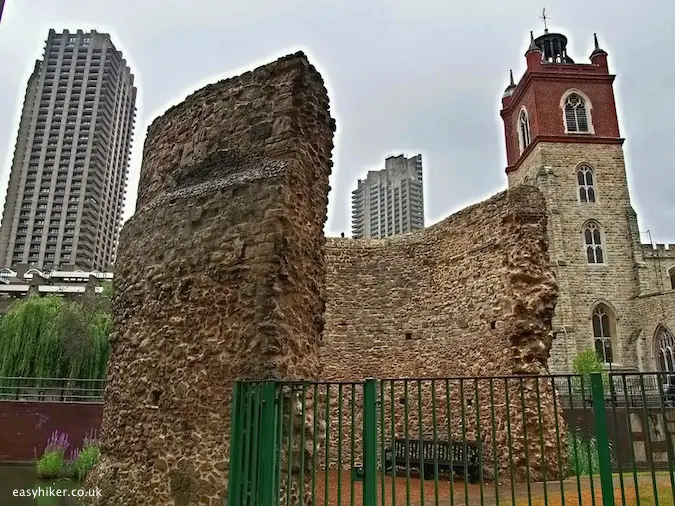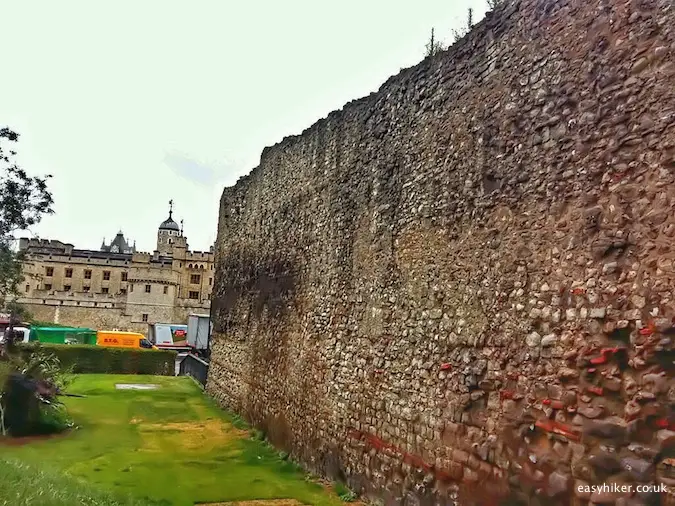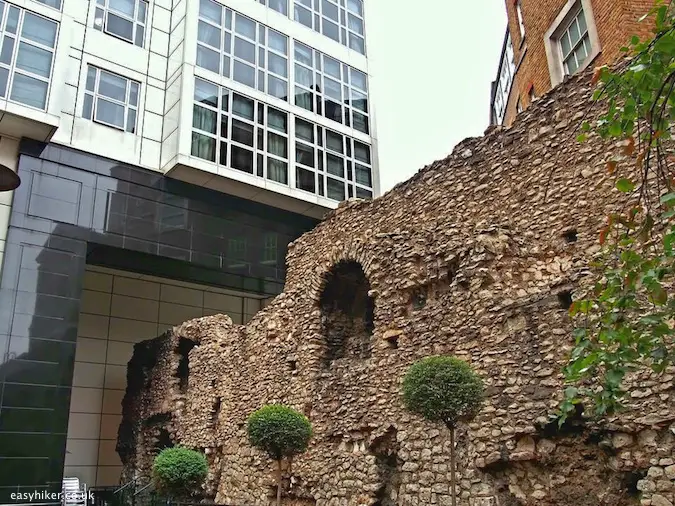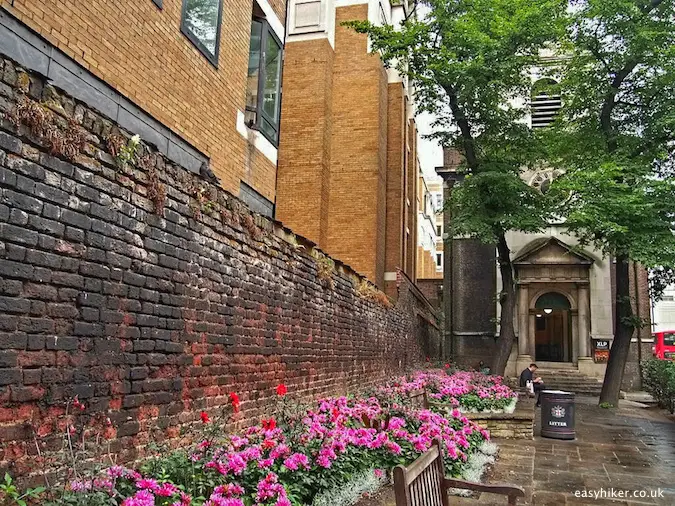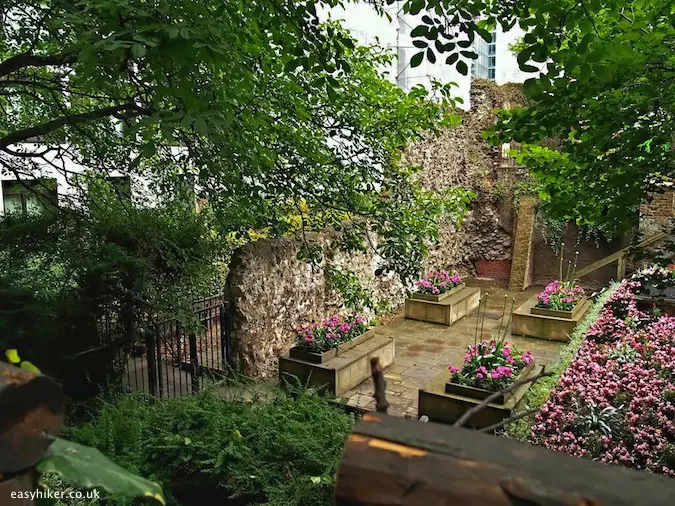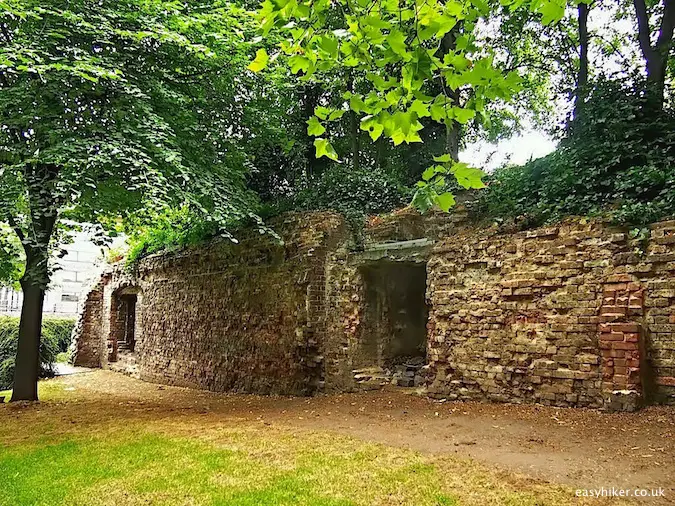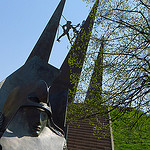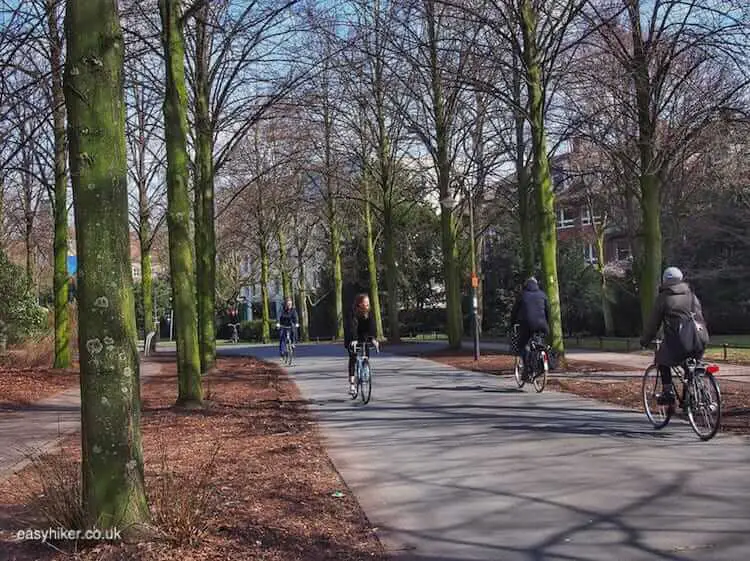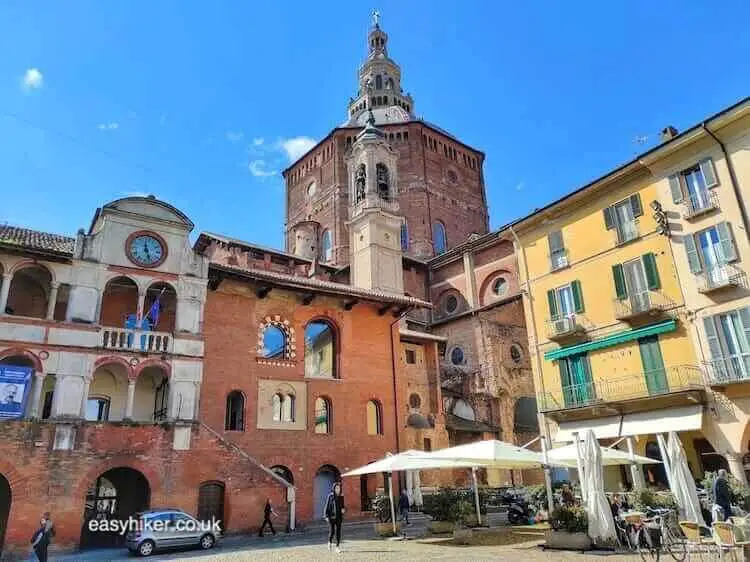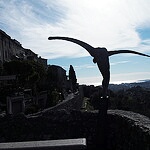Underneath and between the City’s futuristic skyscrapers, a 2000 year old structure is still weaving its way
I suspect that some of you may have heard about the Berlin Wall. I also believe that far fewer will be aware that London has a wall, too – which was equally the product of a foreign invasion and which has played a similarly important part in its host city’s history.
There are, of course, differences between the two walls, too. The London Wall has been more lovingly restored, for one. Above all, however, it has been far more long-lived than its Berlin counterpart which only stood for 28 years.
Think about it: nearly as much time has already passed since that one came down. London’s wall, conversely, stood for almost 2000 years: having been built by the Romans and then fortified in the Middle Ages without ever deviating from its original course. It was only in the 18th and 19th centuries when it was felt that it provided an obstacle for the city’s further growth.
By then, it was no longer an option to have all of it torn down, even if they had wanted to, because many newer buildings had incorporated parts of the old structure, integrating them into their own walls and foundations.
Londoners’ trust in the quality of Roman engineering proved to be well justified: throughout the City, the remnants of the old wall were often the only structures in their neighbourhood to survive the air raids of the German Luftwaffe in WWII.
Take a city walk around the London Wall
At some stage in the late 1960s, a Wall Walk was laid out by somebody in the city administration that traced the course of the old city boundary, and information panels were erected in key places. These panels have mainly disappeared, and it is tempting to say that finding the route in modern-day London requires an archaeological exercise of its own.
In part, this is true, but to be honest, tracing the rough outline of the wall is not all that difficult. The devil, however, is – as always – in the detail.
The walk starts outside Tower Hill underground station: at least that’s easy to find. The old stone walls that you see around you …
… are all part of the ancient structure which was constructed at around 200 AD.
The Tower of London – on the other side of the road – was built later, around the wall or into it, the first of many buildings to do so.
The original Roman walls were approx. 4 m high and raised during the Middle Ages. In some places, you can still see where the Romans finished their work and where the Saxons (or Normans) started theirs.
From Trinity Park – on the right hand side of the station where you can still find the original Wall Walk’s information panel no. 1 – make your way into Cooper’s Row right behind and walk into the backyard of the Grange Hotel.
This is where you can find some of the most impressive sections of the Roman and medieval wall structure. Even the loopholes, set into the wall for archers, can still be seen. These sections – as many others of the wall’s best preserved parts – were only discovered when London received its architectural makeover in the late 20th century.
It is when you continue the route to the Crescent and America Square that you experience the difficulty of tracing the route of the ancient wall. London may be 2000 years old, but the level of building activity rather suggests a modern town in China.
In the City of London, practically everything that you see is either very old (medieval or from the 17th century when the City was rebuilt following the Great Fire) or brand new. Even the post-modern buildings from the 1980s already look old-fashioned, like ageing stoners among soberly dressed junior executives who have freshly arrived from college.
Between all these new skyscrapers, the London Wall continues underground. Many of the buildings in its way have a museum room in the basement where you can see the wall preserved under glass, but obviously you need special permission to enter and have to arrange that beforehand.
Following the outline of the wall over ground, you should continue from Cooper’s Row into Crutched Frairs and Jewry Street, eventually crossing Aldgate square. This was once the site of the largest entry gate into London, the one where the medieval poet Chaucer worked for the customs office. (The gate was only pulled down in 1761.)
Continue on your left into Duke’s Place and then into Wormwood Street which eventually changes its name to London Wall.
Have a look at the outside wall of All Hallows Church on your right: although the majority of the structure dates from the 18th century, there are still parts of the old medieval city wall built into the section nearest to the church entrance.
After approx. a quarter mile, turn right into Wood Street and right again into St Alphage Gardens.
In effect, you are now walking around a rectangular protrusion of the wall which is actually its oldest part, built in 120 AD as a garrison that accommodated 1000 Roman soldiers.
The rest of the wall was later fitted around this fort. This part of the wall was “lost” in the early Middle Ages when a church was built in its place.
Later, residential homes were added, and it was only after a WWII air raid that the old wall sections (then buried deep in the underground) were revealed. The walls that you can see today are mainly medieval in origin.
Return to London Wall and turn left on the next corner into Noble Street.
This section of the wall – also discovered after a WWII air raid and constituting, it is said, “the last open bomb site in London” – is actually the best preserved and most interesting.
At the bottom of the wall, you can still see some of the old Roman stonework.
Now walk back to the corner of Noble Street and London Wall, crossing the latter to the modern lake that follows the outline of an ancient ditch, an additional protection of the city.
When the ditch was eventually filled up, most of the land was converted into a churchyard, and the old wall was left standing as its boundary. This explains why so much of this section of the wall has been so relatively well preserved.
The route of the wall continues from here to Giltspur Street and then straight down to Blackfriars, but takes you through the grounds of the Old Bailey court and Merryl Lynch, for which you would need a special permission (see above).
Better to spend the rest of the afternoon in the neighbouring Museum of London to learn more about the city’s Roman history. Or, if you had enough of that for the day, to sit for a while in the wonderfully tranquil Greyfriars park near-by, another of London’s famous bomb sites – a church whose ruins were converted into a public garden. Enjoy!

